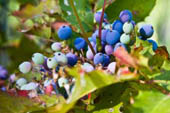
Purpose
To determine whether different colors of light hinder or aid in the growth of common bean plants.
Additional information
The hypothesis is that blue and red light will aid in the growth of the bean plants while green light will hinder the bean plant growth.
Sponsored Links
Required materials
- 4 colors of cellophane – red, blue, green and yellow
- 5 medium to large sized plastic cups
- 5 medium boxes
- 5 bean plant seeds
- Potting soil
- Scissors
- Tape
- Ruler
- Journal or log book
- Camera (optional)
- 2-3 gallons distilled water
- Measuring cup
- Large area in which to keep the boxes that has sufficient sunlight
Estimated Experiment Time
Four to six weeks
Step-By-Step Procedure
- 1. Fill each of the plastic cups ¾ full with potting soil and plant each seed ½ inch deep in the soil.
- 2. Cut a pie-sized hole in each side of each box and leave the top open – cut the flaps off the top so it cannot be closed.
- 3. Label each box and tape two layers of the desired color of cellophane on four of the boxes over the holes and over the top. Make sure you are able to get at least one of the corners of cellophane up for watering later.
- 4. You should now have five boxes, four of them covered with red, blue, yellow and green cellophane and one without cellophane, each with a plastic cup holding a bean plant seed. The box with no cellophane will get no colored light and will be used as the control.
- 5. Place the boxes in a designated area that gets plenty of sunlight during the day. Water each plant with a ¼ cup distilled water each day, watering at night so the plants are not exposed to light other than the light filtered through the cellophane.
- 6. Continue watering plants for four to six weeks.
Note
You can take pictures if you wish, as photos will better illustrate the growth quality of the plants.
Observation
Keep a record of the plants’ growth every day, taking measurements and noting color when the plants begin to germinate. Descriptions of the plants fullness, leaf size, etc. are key when jotting down information in the journal or log book.
Result
The plants will grow best under the red and blue light, as the hypothesis predicted. The green light will hinder plant growth as plants naturally reflect green wavelengths of light and therefore, the plants absorb absolutely no light.
Sponsored Links
Take a moment to visit our table of Periodic Elements page where you can get an in-depth view of all the elements,
complete with the industry first side-by-side element comparisons!